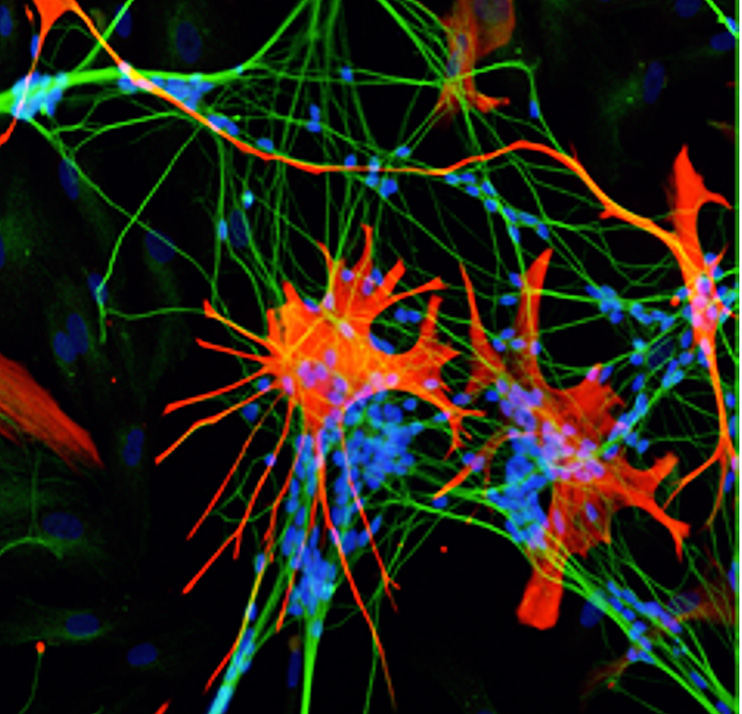Research
What are astrocytes?
We explain how star-shaped cells in the brain work to support neurons, and how this could relate to dementia.

An astrocyte (red) grown in a dish with brain cells (green and blue).
Claire Garwood is a research fellow based at the Sheffield Institute for Translational Neuroscience. Her research has focused on understanding the role that astrocytes play in the development of Alzheimer’s disease.
"I’ve been investigating the role of astrocytes in Alzheimer’s since my Society-funded PhD, which I completed late in 2010.
We call astrocytes the ‘stars of the brain’ because they have a starlike shape, but also because they have many important roles, including providing essential nutrients and other chemicals to neurons to ensure their survival.
"As neurons are the brain cells that we need to make thoughts and send instructions to the body, this means that astrocytes are critical for brain health. You might also be surprised to learn that astrocytes actually outnumber neurons in the human brain."
We know that astrocytes change early on in Alzheimer’s, but we don’t yet have a good understanding of why these changes occur and how they contribute to the disease.
One of these changes is that astrocytes no longer respond to insulin correctly. Insulin is a hormone found naturally in the body.
Insulin works to help glucose enter our cells so that they can make energy. We know that when the cells of the body stop responding to insulin, this can result in diabetes.
My current research project looks at what this change in insulin response means for astrocytes – how do they make energy and, critically, do they still provide support to neurons?

